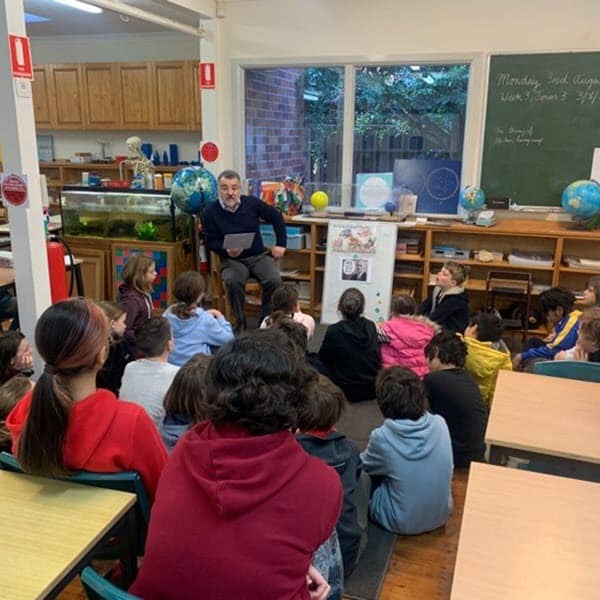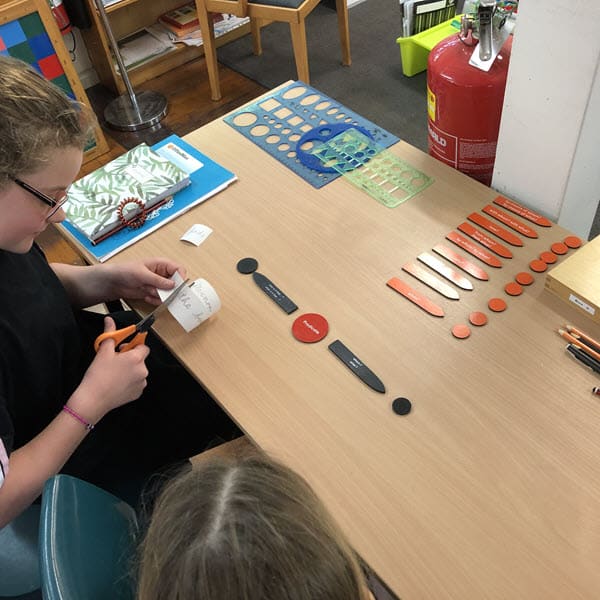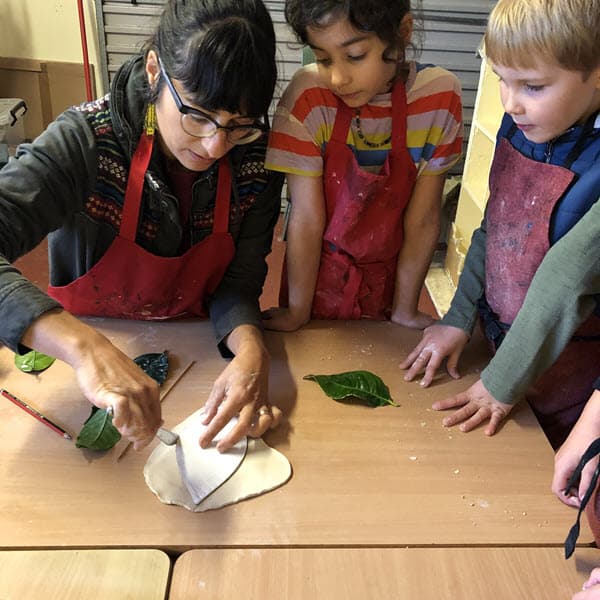The classroom continues to be a community of learning with the children actively exploring, discovering and sharing with the Montessori concepts and materials. Great work continues with each day presenting something new and stimulating. Within this community, the children are initiating, sharing, collaborating, researching and creating great work.
With so much happening in the world, the past four weeks of Term 3 have felt like starting the year all over again. It has been a time to ‘reset’. Over the break Lauren and I took time out to reorganise the classroom environment creating more definite areas for each of the subjects. In the end it seemed like a major ‘spring clean’! This has given the children a new enthusiasm for work as they now have a variety of workspaces and easier access to materials and resources. Coming back to school even the children needed to reset, and at times it has been quite tough but a good learning experience. We have discussed the concept of ‘freedom and discipline’ in the classroom environment and what this means for all of us, teachers included, when going about our work. Discussions have centred around socialising and positive work habits including time to be social and time for deep concentration.
During this time, it is important to appreciate Montessori’s basic tenant of “following the child”. Through close observation of work choices and habits, we have been facilitating at the point of need. This has included children inviting us to join in their work activity, reviewing presentations and the use of various Montessori materials. We are giving new presentations to further the use of the materials and the development of concepts and understandings. As the children delve deeper into areas of interest, the subject areas are weaving in and out of each other creating a truly interrelated program of work.
Here is a sample of some of the exploration and self-discovery that has taken place:
The History of Language:
Children in the 9-12 are reaching the point of no longer being interested in exploring sensorially the facts of language for their own sake. Their drive is to put language in context, to explore reasons, to use language on more than a literal level. Therefore, the study of language is presented very imaginatively if it is to capture the child’s interest. It must appeal to their imagination and reason rather than just to reality. Grammar rules for memorisation, composition as assignments and books to be analysed have no place in the 9-12 classroom. What has a place is the mystery of language, the wonder of creation of language, the power that language has, the rapidity with which it changes, the responsibility we must take towards it, and the possibilities for communication that it provides.
The History of Language builds on the knowledge of language so far. This includes their earliest experiences of manipulating the Sandpaper Letters in the 3-6 environment, through to the language work with Grammar Boxes, Word Study and Sentence Analysis. It gives the history of the creation of our English language and extends this exploration into other alphabets and forms of communication throughout time and across the world. The Story of Communication in Signs is one of the great lessons designed to inspire gratitude towards human beings for this essential achievement that has been passed down to us, modified and adapted along the way. This historical study incorporates both the history of written and spoken language. Etymology is one of the major tools we have, of looking back in time to how language was developed. Building on word bases and exploring the spelling of words created is another way of looking back to the past to create new knowledge for the present.
The aim of the study of the History of Language is not to make linguistic scholars of the children but to intrigue them with the stories of their heritage as human beings and as speakers of a particular language. We hope that by doing so, children will understand their responsibility towards language and desire to conserve its quality.
(Below: Children listening to the Story of Spoken Language: 5 Theories of Spoken Language)

Sentence Analysis and Adverbial Extensions:
As a part of language this term the children have been working with different sentences and learning how to understand what is being communicated to them. The students were asked to break up the sentences and group them, accordingly, helping them with syntax and style in language, as well as organising their thoughts in a logical way.
First the students were given a couple of simple sentences to analyse. The sentence – ‘Jade rode the bus on Monday afternoon’ was read out loud. The students were asked to find the predicate (verb), and to place it on top of the red circle which symbolises the predicate.
Then they were asked the question – ‘Who is it that? What is it that rode?’ The answer was Jade. This is the subject in the sentence. ‘Jade rode whom? What?’. The answer was – ‘the bus’. This symbolised the direct object.
Then the children read through the adverbial questions to analyse the last part of their sentence. In this case, the adverbial extension of ‘when’ (time) was the answer – ‘on Monday afternoon’.

Visual Arts:
Over the past four weeks the children with Tamlin have been exploring various art media and techniques as their FMS Art Auction pieces around the theme ‘Connection’ gain momentum.
The children are currently creating digital photographic images and silhouettes that support the theme ‘Connection’. To expand their knowledge and creativity the students have visited a professional photography studio. Together with our parents Ana-Lia Marx (photographer) and Graham Olsen (digital animation) the students will use various lighting effects and shutter speed to produce digital photographic artworks.
The children are also using clay as an organic medium to explore the theme ‘Connection’. With parent Anahita Olsen and Tamlin, the children are creating amazing leaf shapes and other sculptural shapes that will come together to form a special art piece.
Our final year students are currently exploring the possibility of creating a separate artwork for the FMS Art Auction using glass blowing as a technique. They have researched and begun connecting with a local glassmith in order to bring this project to fruition. Preliminary designs look at individual pieces that will come together to form one creative piece.
This integrated approach is one of the strengths of the Montessori primary. Dr. Montessori believed interest comes in part through integration and interconnection. In making these connections the children are bringing to life the essence of what Dr. Montessori called Cosmic Education.
(Below: Our Lower Primary students working with Anahita on the combined Lower & Upper Primary artwork)




